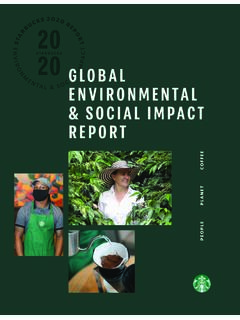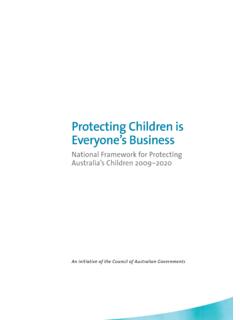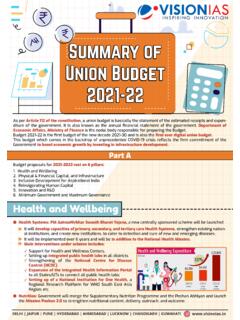Transcription of MATERIAL CHANGE - Drive Sustainability
1 MATERIAL CHANGEA STUDY OF RISKS AND OPPORTUNITIES FOR COLLECTIVE ACTION IN THE MATERIALS SUPPLY CHAINS OF THE AUTOMOTIVE AND ELECTRONICS INDUSTRIESUse of this report and information in it is covered by the conditions of a Creative Commons-Attribution-NonCommercial-NoDeri vative Works License. Please always credit Drive Sustainability , the Responsible Minerals Initiative and The Dragonfly Initiative for compiling and analysing this and report design by SOS Design ConsultancyVersion 1, July 2018 The use of this report and information in this report is covered by the conditions of a Creative Commons-Attribution-NonCommercial-NoDeri vative Works License. Please always credit the Responsible Minerals Initiative, Drive Sustainability and The Dragonfly Initiative for the work they have done compiling and analysing this FOREWORDE nvironmental, social and governance issues associated with corporate supply chains and the sourcing of materials used in the manufacture of industrial and consumer products are subject to increasing report gathers, analyses and presents publicly available information on materials commonly used in the automotive and electronics industries.
2 It aims to positively contribute to discussions on responsible sourcing among industry peers and stakeholders by enabling industry wide comparisons of the materials and main producing countries environmental, social and governance issues and their importance in the manufacturing of consumer and industrial automotive and electronic products. The report does not attempt to evaluate the net contribution of materials to society or to weigh the costs and benefits of natural resource development. There are both adverse and positive outcomes associated with industrial activity. Rather, the goal of DS and the RMI is to raise awareness of potential risks and the opportunities for collective action to catalyse systemic improvements throughout the supply chains of both scope of the study is intentionally broad. Instead of narrowing the analysis to a few materials and researching their supply chains in detail, MATERIAL CHANGE presents a general industry level assessment of many materials with the goal of challenging the reader to broaden their view of multifaceted and interconnected manufacturing supply chains.
3 Similarly general in presentation are the environmental and social information and economic and governance indicators for countries identified as top producers of the materials. Regulators, investors, consumers and environmental and human rights groups are appealing to companies to publicly disclose the results of supplier due diligence and commit to engaging business partners in efforts to address negative impacts associated with their activities and improve operating practices. Navigating the path towards achieving that end however, is not supply chains of businesses today are highly complex. They extend to multiple tiers and to thousands of suppliers. In the manufacture of their products, businesses source parts, components, and modules containing many materials from hundreds of countries across the globe, and from a wide range of environmental, social and political contexts.
4 To meet the challenge of conducting due diligence, appropriately monitor performance and enable improvements at the operations of their suppliers, companies today need tailored information on the environmental, social and governance risks in their supply chains. Furthermore, to identify and prioritise opportunities to collaborate with their peers to effect positive CHANGE , analytical comparisons across many materials, industries, countries and issues considerably aid sound strategic decision making. One of the biggest obstacles to setting and implementing strategies for responsible sourcing, however, is the constrained access to and limited public availability of reliable current data and analysis on the environmental and social dimensions of MATERIAL production and processing. MATERIAL CHANGE presents findings from studies carried out by Drive Sustainability (DS) and the Responsible Minerals Initiative (RMI) on the responsible sourcing of materials in the automotive and electronics industries.
5 It includes results from these studies but is not comprehensive in its coverage of the studies areas of research, nor are the results conclusive. Rather, this report is an early milestone in the continuing programmes of both DS and the use of this report and information in this report is covered by the conditions of a Creative Commons-Attribution-NonCommercial-NoDeri vative Works License. Please always credit the Responsible Minerals Initiative, Drive Sustainability and The Dragonfly Initiative for the work they have done compiling and analysing this use of this report and information in this report is covered by the conditions of a Creative Commons-Attribution-NonCommercial-NoDeri vative Works License. Please always credit the Responsible Minerals Initiative, Drive Sustainability and The Dragonfly Initiative for the work they have done compiling and analysing this report uses publicly available information.
6 Despite the very considerable research efforts of industry associations and research institutes, there are gaps in contemporary information on environmental, social and governance issues associated with the production of many materials and on their supply, demand and use. DS and the RMI will continue to explore ways in which the two organisations and their members can contribute to improving the availability of reliable information and to incorporate that information into future reports as it becomes MATERIAL to MATERIAL , and from company to company, supply CHANGE risks can vary significantly, as do the opportunities for members of the two industries to catalyse CHANGE . The corporate policies of individual companies and management practices at sites and facilities are very often the primary factors determining the sound management of potential impacts associated with business activities and associated reputation risks.
7 DS and the RMI acknowledge that companies have a responsibility to conduct due diligence on their supply chains in accordance with internationally recognised standards and that decisions on supply chains and MATERIAL sourcing are a matter for the management of individual businesses. MATERIAL CHANGE is not a replacement for company due diligence, and the information presented in this report should not be interpreted as representing specific risks to any one individual company or as being irreversibly present in a particular MATERIAL supply chain. DS and the RMI recognise that collaborative action among businesses, across industries, and with governments and civil society is a powerful tool to address some of the serious social and environmental problems affecting workers and communities in countries where many of the materials in this report originate. MATERIAL CHANGE aims to be a starting point from which to stimulate an exchange of information on where collective actions by industry groups or trade associations might be best focused to maximize positive social, environmental and governance impacts.
8 Modern carThe use of this report and information in this report is covered by the conditions of a Creative Commons-Attribution-NonCommercial-NoDeri vative Works License. Please always credit the Responsible Minerals Initiative, Drive Sustainability and The Dragonfly Initiative for the work they have done compiling and analysing this OF CONTENTSAPPENDICES106 Appendix A: Materials analysed in this study and completeness of data sets 107 Appendix B: Guide to the assessment criteria and rating system for materials 108 Appendix C: Guide to the producer-country and additional MATERIAL criteria and indicators 119 TABLE OF Drive Sustainability11 Figure 1: Drive Sustainability s Raw Materials Observatory 11 The Responsible Minerals Initiative12 Figure 2: The RMI approach to identify & prioritise salient risks 12 Drive Sustainability AND THE RESPONSIBLE MINERALS INITIATIVE 101 HOW TO USE THIS REPORT The materials20 Figures 3 & 4: Illustrative products: Passenger vehicle, Smartphone 21-22 Box 1.
9 37 Materials The assessment criteria 24 Table 1: The assessment criteria Considerations in the choice and formulation of the criteria Assessing opportunities for collective action 27 STUDY METHODOLOGY 183 Table 2: Completeness of MATERIAL data sets 29 STUDY LIMITATIONS 284 STUDY RESULTS The materials heat maps 32 Table 3: Key to materials ratings 32 Figures 5/6: Materials heat maps Materials ratings 38 The automotive and electronics industries consumption plotted against: Figures 7/8: Environmental, social and governance aggregated risk rating 39 Figures 9/10: Association with Artisanal and Small-Scale Mining 40 Figures 11/12: Association with child labour and forced labour 41 Figures 13/14: Association with countries associated with weak rule of law 42 Figures 15/16: Association with countries experiencing corruption 43 Figures 17/18: Association with countries experiencing high-intensity conflict 44 Figures 19/20: Association with high CO2 emissions 45 Figures 21/22: Association with incidences of conflict with indigenous Peoples 46 Figures 23/24: Association with the potential for harm from hazardous materials or chemicals MATERIAL profiles48-95 Box 2: List of 18 MATERIAL profiles and profile breakdown 48-49 Aluminium / BauxiteCobaltCopperGlass (silica sand)GoldGraphite (natural)LeatherLithiumMicaNickelPalladi umRare Earth Elements Rubber (natural)Steel / References cited in the MATERIAL profiles 96 The use of this report and information in this report is covered by the conditions of a Creative Commons-Attribution-NonCommercial-NoDeri vative Works License.
10 Please always credit the Responsible Minerals Initiative, Drive Sustainability and The Dragonfly Initiative for the work they have done compiling and analysing this APPROACHINDIVIDUAL APPROACHRisk MatrixMONITORINGTOP17 MATERIAL ProfilesTOPRisk AssessmentInternalMonitoringRISK ASSESMENTACTION EVALUATIONO ptions for ActionsIndividualApproachFEASIBILITY ANALYSISR elevantNot relevantNo actionActionPlanning &BudgetEvaluation of actionsSUSTAINABILITY STRATEGYC ontinue monitoringThe Partnership, facilitated by CSR Europe, seeks to positively influence the automotive supply chain by promoting a common approach within the industry and by supporting the integration of Sustainability into procurement processes. DS has a set of common guidelines - the Guiding Principles that outline expectations for suppliers on key responsibility issues including, but not limited to, business ethics, working conditions, human rights and environmental matters.





